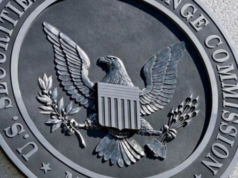The Direct-to-Consumer Wine Shipping Report is an annual collaboration between Sovos and Wines & Vines examining wine shipments from wineries to consumers in the United States. To
create this report, Wines & Vines Analytics created an algorithm that uses its database of U.S. wineries to extrapolate all direct-to-consumer shipments from millions of anonymous direct
shipping transactions filtered through Sovos’ ShipCompliant platform in 2017. The result is the most accurate estimate of the American direct-to-consumer shipping channel.
Report Review from MarketWatch
Going Direct (MarketWatch).
Consumers have made direct shipping an increasingly vital part of the wine-buying landscape.
After years of legal battles, public relations campaigns, and development of new technologies, direct shipping of wine is now mainstream in much of the United States. Last year, volume of direct-shipped wine was up 15.3% to 5.78 million cases, with consumer spending growing 15.5% to $2.69 billion, according to the 2018 Direct to Consumer Wine Shipping Report by Sovos and Wines & Vines. The channel continues to gain steam this year, and is on pace to eclipse 6 million cases and $3 billion in sales by year-end, to reach nearly 2% of the U.S. wine market in volume and 5% in sales. And those figures include only wines shipped directly from wineries to consumers—not wines shipped from retailers to consumers, which pass through the supplier and wholesale tiers. Those sales, according to Wine.com, are estimated at a further $1 billion.
Direct shipments from wineries, known as direct-to-consumer (DTC), are now clearly part of the wine-selling landscape, particularly for smaller wineries. Since the Granholm v. Heald U.S. Supreme Court decision back in 2005, the number of states where wines can legally be shipped has risen from 31 to 46. “That’s been a steady drumbeat,” notes Larry Cormier, general manager of ShipCompliant by Sovos. “Technology is making it possible for people to enjoy the business of direct-to-consumer, and it’s also being used by the states to gain greater visibility into transactions.” Limited production players (less than 1,000 cases annually) make up 42% of sales, while wineries making between 1,000-5,000 cases comprise a 38% share, according to ShipCompliant by Sovos. Medium-size wineries (50,000-500,000 cases) currently account for 23% of the total value of the channel, and saw their direct-to-consumer sales rise 37% last year.
Pennsylvania recently embraced interstate direct wine shipping, and DTC sales have been growing fast ever since: Last year was the first full calendar year for direct wine shipments in the Keystone State, and it became the nation’s No.-10 DTC destination by volume and No.-11 by value. “Act 39 of 2016, which included the most comprehensive changes to the Pennsylvania Liquor Code since Prohibition, opened the door to a new direct wine shipping industry in Pennsylvania beginning in August 2016,” says Pennsylvania Liquor Control Board (PLCB) chairman Tim Holden. Pennsylvanians can now order up to 36 cases annually, per producer, to be direct-shipped to their homes from more than 1,000 licensed direct wine shippers. In the second half of 2016, some 59,000 cases of wine were shipped into the state, and in 2017 that number jumped to 152,000 cases valued at $57 million, according to the 2018 Direct to Consumer Wine Shipping Report.





